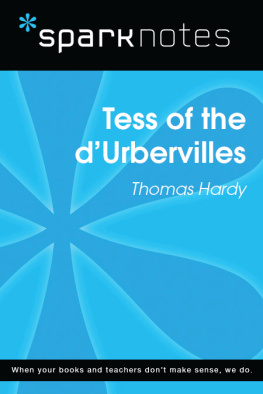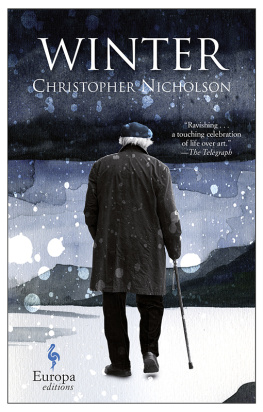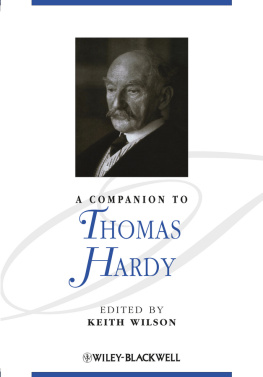Copyright 2013 Houghton Mifflin Harcourt Publishing Company
All rights reserved
www.hmhbooks.com
cliffsnotes.com
No part of this work may be reproduced or transmitted in any form or by any means, electronic or mechanical, including photocopying and recording, or by any information storage or retrieval system without the prior written permission of Houghton Mifflin Harcourt Publishing Company unless such copying is expressly permitted by federal copyright law. Address inquiries to Permissions, Houghton Mifflin Harcourt Publishing Company, 215 Park Avenue South, New York, New York 10003.
The publisher and the author make no representations or warranties with respect to the accuracy or completeness of the contents of this work and specifically disclaim all warranties, including without limitation warranties of fitness for a particular purpose. No warranty may be created or extended by sales or promotional materials. The advice and strategies contained herein may not be suitable for every situation. This work is sold with the understanding that the publisher is not engaged in rendering legal, accounting, or other professional services. If professional assistance is required, the services of a competent professional person should be sought. Neither the publisher nor the author shall be liable for damages arising here from. The fact that an organization or Website is referred to in this work as a citation and/or a potential source of further information does not mean that the author or the publisher endorses the information the organization or Website may provide or recommendations it may make. Further, readers should be aware that Internet Websites listed in this work may have changed or disappeared between when this work was written and when it is read.
Trademarks: CliffsNotes, the CliffsNotes logo, Cliffs, cliffsnotes.com, and all related trademarks, logos, and trade dress are trademarks or registered trademarks of Houghton Mifflin Harcourt Publishing Company. All other trademarks are the property of their respective owners. Houghton is not associated with any product or vendor mentioned in this book.
Library of Congress Cataloging-in-Publication data is available.
Library of Congress Control Number: 00-108203
ISBN: 0-7645-8658-0
eISBN 978-0-544-18415-2
v1.0713
About the Author
Currently a librarian and instructor of English at McNeese State University in Lake Charles, LA, Jeff Coghill received his B.A. in English from Methodist College, his MA in English from Western Carolina University, and his MLIS from the University of Alabama. He lives in Lake Charles with his wife, Michele, and his teenage daughter, Caroline.
Publishers Acknowledgments
Editorial
Project Editor: Tracy Barr
Acquisitions Editor: Greg Tubach
Glossary Editors: The editors and staff at
Websters New World Dictionaries
Editorial Administrator: Michelle Hacker
Production
Indexer: York Production Services, Inc.
Proofreader: York Production Services, Inc.
IDG Books Indianapolis Production Department
How to Use This Book
CliffsNotes Hardys Tess of the dUrbervilles supplements the original work, giving you background information about the author, an introduction to the novel, a graphical character map, critical commentaries, expanded glossaries, and a comprehensive index. CliffsNotes Review tests your comprehension of the original text and reinforces learning with questions and answers, practice projects, and more. For further information on Thomas Hardy and Tess of the dUrbervilles, check out the CliffsNotes Resource Center.
CliffsNotes provides the following icons to highlight essential elements of particular interest:
 Reveals the underlying themes in the work.
Reveals the underlying themes in the work.
 Helps you to more easily relate to or discover the depth of a character.
Helps you to more easily relate to or discover the depth of a character.
 Uncovers elements such as setting, atmosphere, mystery, passion, violence, irony, symbolism, tragedy, foreshadowing, and satire.
Uncovers elements such as setting, atmosphere, mystery, passion, violence, irony, symbolism, tragedy, foreshadowing, and satire.
 Enables you to appreciate the nuances of words and phrases.
Enables you to appreciate the nuances of words and phrases.
Dont Miss Our Web Site
Discover classic literature as well as modern-day treasures by visiting the Cliffs Notes Web site at www.cliffsnotes.com. You can obtain a quick download of a CliffsNotes title, purchase a title in print form, browse our catalog, or view online samples.
Youll also find interactive tools that are fun and informative, links to interesting Web sites, tips, articles, and additional resources to help you, not only for literature, but for test prep, finance, careers, computers, and the Internet too. See you at www.cliffsnotes.com!
LIFE AND BACKGROUND OF THE AUTHOR
Formative Years
Thomas Hardy was born in Higher Bockhampton, Dorset, England on June 2, 1840, the eldest son of Thomas Hardy and Jemima (Hand) Hardy. His father was a stonemason and builder; his mother passed on her love of reading and books to her son. Hardy had somewhat of an isolated life on the open fields of the region. He grew up living and examining rural life, which figures prominently in many of his novels. His primary school education lasted until he was sixteen, at which time he was sent to an apprenticeship with John Hicks, a local architect.
Early Career
By 1862, when he was 22, Hardy left for London to work as a draftsman in the office of Arthur Blomfield. While in London, Hardy was influenced by the works of Charles Swinburne, Robert Browning, and Charles Darwin (the author of Origin of Species, 1856). Poor health forced Hardy to return to his native region in 1867, where he worked for Hicks again and for another architect, G.R. Crickmay.
Hardys education was interrupted by his work as an architect. He had wanted to attend the university and become an Anglican minister, but lack of funds and his declining interest in religion swayed Hardy away from that avocation and more toward a self-study of poetry and writing. Hardy tried his hand at writing when he was 17 and wrote for years while he was a practicing architect. His first novel manuscript, The Poor Man and the Lady (186768), was rejected by several publishers, but one editor, George Meredith encouraged him, and so Hardy set out to refine his style. A second story, Desperate Remedies (1871), was accepted and published. His next novel, Under the Greenwood Tree (1872), demonstrates a more polished Hardy now coming into his own style.
By 1870, Hardy was sent by his employer to begin a restoration project of the St. Juliot Church in Cornwall. Here he met his first wife, Emma Lavinia Gifford, whom Hardy married in 1874. Emma encouraged Hardy to write, and by 1872, Hardy left architecture to devote his time to his literary career.
Literary Work
When Hardy left his career as architect, he did so with a contract for 11 monthly installments of a tale, A Pair of Blue Eyes, in the Cornhill Magazine. His reputation as one of Englands newer novelists sustained the Hardy family from that time on. The next novel,
Next page










 Reveals the underlying themes in the work.
Reveals the underlying themes in the work. Helps you to more easily relate to or discover the depth of a character.
Helps you to more easily relate to or discover the depth of a character. Uncovers elements such as setting, atmosphere, mystery, passion, violence, irony, symbolism, tragedy, foreshadowing, and satire.
Uncovers elements such as setting, atmosphere, mystery, passion, violence, irony, symbolism, tragedy, foreshadowing, and satire. Enables you to appreciate the nuances of words and phrases.
Enables you to appreciate the nuances of words and phrases.